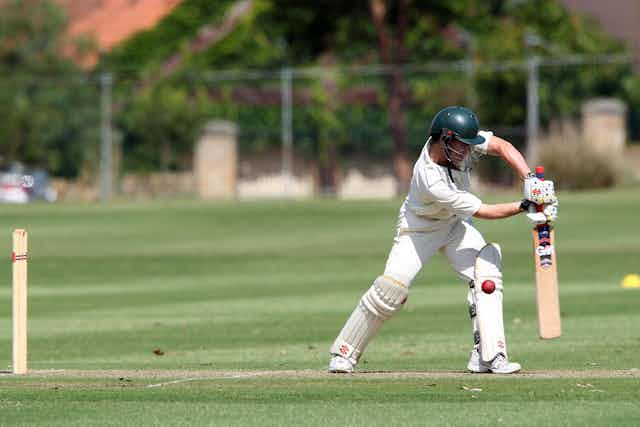Australia is a sporting nation and the tragic death of batsman Phil Hughes is still very much in the hearts and minds of fans and players alike.
Deaths in sport are rare but history does tell us that they can, and do, happen.
The impact of Phil Hughes’ death has been played out very publicly. He was one of Australia’s most promising elite sportsmen and a public figure. We saw his injury-causing incident via media coverage.
We, the public, already know a lot about his injury and how it occurred. There will be ongoing detailed analysis of all sorts of data by experts to make sure everything is known about this terrible incident.
Cricket Australia and others will use this information to make improvements to cricket to reduce the risk of future similar injuries.
The other sporting injuries
But injuries, including fatalities, occur more commonly to non-professional sportspeople because of their sheer number.
How common are deaths and other injuries? What causes those injuries and what can be done to prevent them? We don’t really know.
Australia has no national, or even state-based, monitoring of sports injuries.
Sports injury surveillance is the crucial first stage in prevention. We need timely data on what injuries occur, to whom and how often, to indicate which sports people and injury types should be prioritised for prevention.
We also need robust information about what caused those injuries to fully understand how to prevent them and identify effective preventive solutions.
The latest information we do have on sports injuries was published only last month by the Australian Institute of Health and Welfare (AIHW).
It shows that in 2011-12, 36,000 Australians aged 15 years and higher were hospitalised for sport injury. About two thirds of them were aged under 35, and 31 people died in hospital as a result of their injuries.
Our own recent analysis of non-fatal sports injury hospitalisations in children paints an even more alarming picture.
Sport injuries vs road traffic injuries
From 2004-10, 75,413 Victorian children were treated in hospitals for sports injuries. There was a 29% increase in the number of cases treated annually over this period, compared to a decline of 26% in road traffic injury cases.
Moreover, the burden of these sports injuries far exceeded those for road traffic injury:
- 1.9 times the total number of days spent in hospital
- 3.0 times the number of years lost to disability
- 2.6 times the direct hospital treatment costs.
People involved in road crashes often need to be rushed to hospital for injury treatment. This is the case because there has been significant investment in collecting information on road deaths and accidents for many decades.
Armed with this information, government bodies, vehicle manufacturers and others have invested in road safety measures and road safety campaigns, and rightly so. They have had robust data upon which to base preventive decisions and to demonstrate that preventive measures work.
But we can’t do the same for sport injuries because we don’t have similar data.
The lack of data is not restricted to sports injuries that lead to death. Fractures are the major cause of sports injury hospitalisations across the country, but without this year’s AIHW report we may not know that.
Given the relative impact of sports injury versus road injury in hospital statistics, why is so little being done to prevent sports injuries?
Data-informed prevention has significantly reduced the road injury toll. It has the potential to do the same for sports injury. I have no doubt that a large reason for why this has not happened to date is because of the lack of a national sports injury database.
We need the data on sporting injuries
Earlier this year, I called for the establishment of a national registry on concussion in sport. This is another serious type of sports injury for which preventive solutions need to be developed and implemented and for which there is evidence of an increasing number of cases over time.
Australia’s love of watching and playing sport is well known, and there is a general perception that most sports injuries are “freak accidents” and that they “occur by chance”.
But nothing could be further from the truth. There is always a reason, or combination of factors, that lead to a sports injury. This fact alone means that the vast majority of sports injuries should be preventable.
But we need data to inform this.
As a starting point, we should require sporting clubs to report on injuries in much the same way employers report on health and safety incidents and injuries in the workplace. This data should then be reported to state and national bodies where it can be collated and major causes of injuries identified.
Hospitals too should be required to routinely report on any sporting injuries in much the same way they do on road traffic incidents. This injury treatment and severity information could then be combined with the data reported from sporting bodies to get a full picture of what sports injuries occur and why.
Before it’s too late
Until we have a such a national data collection that routinely collects and regularly reports on sports injury we will never really know about what injuries occur in sport, to whom and why.
We will not know what preventive measures could be implemented to make sport safer. We will not have key agencies taking leadership for ensuring that sports injury prevention measures are widely implemented and adopted.
More worryingly, we will continue to put our children and ourselves at risk of sports injury and some of these will significantly impact our health in the future.

